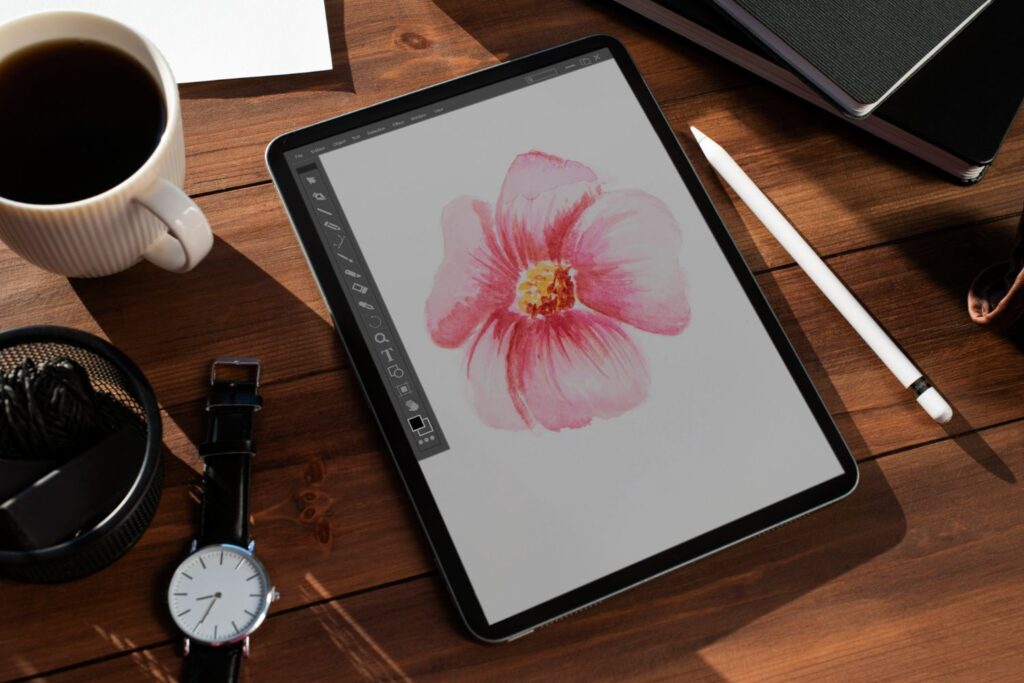Procreate is a powerful tool that allows artists to create stunning illustrations, digital paintings, and designs. One of the key elements in creating eye-catching artworks is the use of shapes. In this article, we will explore different tutorials that will help you master shapes in Procreate. We will guide you through various techniques, tips, and tricks that will take your skills to the next level. So, without further ado, let’s dive into the world of shapes in Procreate!
An Introduction to Quick Shape in Procreate
In this tutorial by Ghost Paper, you’ll learn the basics of Procreate’s Quick Shape feature. This feature allows you to create clean and perfect shapes with ease. Ghost Paper demonstrates how to activate Quick Shape and use it to create various shapes, such as circles, squares, and triangles. You’ll get familiar with how to draw shapes in Procreate, as well as how to adjust and edit them as needed.
Some of the main takeaways from this tutorial include learning about the various snapping settings and how to use them to your advantage, how to transform shapes and switch between different shape modes, and tricks for creating perfectly aligned shapes. This tutorial will set a strong foundation for mastering shapes in Procreate.
Check out more of Ghost Paper’s tutorials on their YouTube channel.
Enhance Your Artwork with QuickShape
MishkinArt’s tutorial on QuickShape in Procreate delves deeper into the feature’s capabilities, showing you how to use QuickShape to create perfect lines and achieve a polished look in your artwork. You’ll learn how to activate and use the QuickShape tool, and how to customize the settings to suit your needs. This tutorial aims to make your workflow more efficient, and help you create precise, professional-looking shapes and lines.
Not only does this tutorial teach you about QuickShape, but it also provides some valuable tips for using the tool effectively in your artwork. Make sure to experiment with different techniques taught in this tutorial to improve your skills in Procreate.
Explore more of MishkinArt’s content by visiting their YouTube channel.
Achieve Smooth Lines in Procreate
Ghost Paper returns with a tutorial on improving the quality of your lines in Procreate. Often when drawing digitally, it’s easy to end up with shaky or rough lines. This tutorial explores some common reasons why your lines might not look as good as you’d like, and more importantly, how to fix them.
One of themain techniques discussed in this tutorial is using the Streamline (or Stabilization) setting in Procreate. This setting helps you create smoother, more natural lines, regardless of your drawing skill level. Ghost Paper also provides tips on adjusting other settings, such as the opacity and size of your brush, to achieve the desired results.
Understanding these techniques will significantly enhance your skills and confidence when working with lines and shapes in Procreate. Be sure to check out more tutorials from Ghost Paper’s channel for further inspiration and guidance.
Two Easy and Effective Ways to Draw Smooth Lines
In Tatyana Deniz’s tutorial, you’ll learn two effective methods to draw smooth lines in Procreate. Whether you’re drawing complex shapes or simple lines, these techniques will help you achieve a clean and professional finish.
The first method involves adjusting the Streamline (or Stabilization) setting for your brushes, similar to what we learned in Ghost Paper’s tutorial. Tatyana explains how this setting can be adjusted for different brushes to get the desired effect. The second method involves the use of the QuickLine feature, which allows you to draw perfectly straight lines in Procreate with just a few taps.
Both of these techniques will help you draw smooth, precise lines, which are essential when working with shapes in Procreate. To learn more from Tatyana Deniz, visit her YouTube channel.
Filling Shapes with Texture and Color Efficiently
In this tutorial, Ghost Paper shares valuable tips on how to fill shapes quickly with texture and color in Procreate. You’ll learn how to utilize different layers and brushes to achieve a textured, multi-dimensional appearance for your shapes.
This tutorial covers how to use clipping masks and alpha lock for efficient and non-destructive color and texture application. Additionally, you’ll learn how to blend colors seamlessly and add subtle textures to your shapes, enhancing the overall look of your artwork.
These techniques can greatly improve your workflow and help you create vibrant, appealing shapes in Procreate. Don’t forget to check out more of Ghost Paper’s tutorials on YouTube for more tips and insights.
Common Mistakes and How to Avoid Them
When working with shapes in Procreate, it’s essential to be aware of common mistakes that can hinder your progress. Some common pitfalls include:
- Not using the QuickShape and QuickLine features to their full potential – these tools can significantly improve the precision and quality of your shapes and lines.
- Overlooking the Streamline (or Stabilization) setting – adjusting this setting can help you achieve smoother, more natural lines.
- Not experimenting with different brush settings and techniques – every artist has a unique style, so it’s crucial to find what works best for you.
- Ignoring the power of layers and blending modes – these features can help you create complex, visually appealing shapes with ease.
- Rushing the process – take your time when working with shapes in Procreate, and don’t be afraid to undo and redo your work until you’re satisfied with the result.
By being aware of these potential mistakes, you’re more likely to avoid them and create high-quality artwork using shapes in Procreate.
Conclusion
Drawing shapes in Procreate is a crucial skill for any digital artist, whether you’re a beginner or an experienced professional. By following the tips and tricks shared in these tutorials, you’ll be able to create clean, precise shapes, improve your workflow, and add depth and complexity to your artwork. Don’t forget to practice and experiment with different techniques to find what works best for your unique style. Happy drawing!


